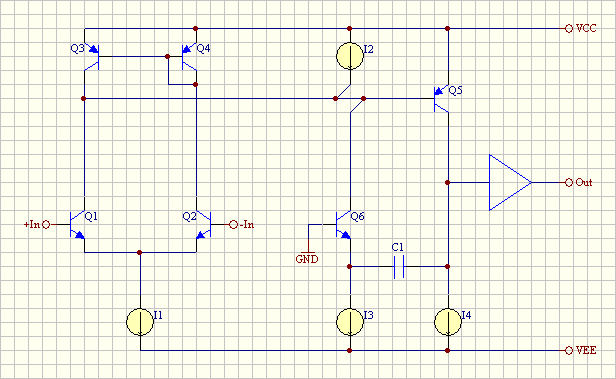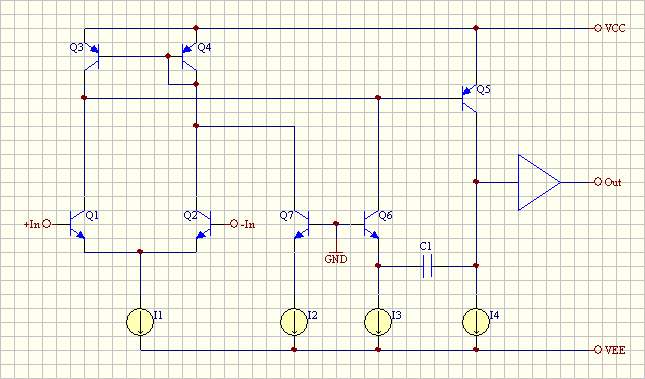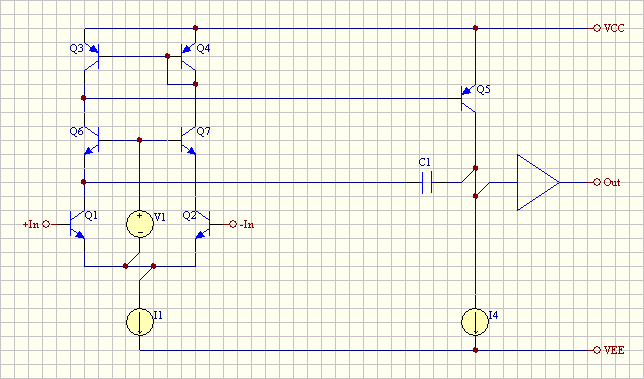Samuel Groner
Well-known member
Hi
It is well known that the positive PSRR of a standard two-stage topology NPN input opamp is lacking perfection as frequency increases; amongst several possible fixes Ahuja presented an IEEE paper on cascoding the current junction (link for those with IEEE access).
Consider the following simplified schematic:

It is obvious that I2 needs to match the collector current of Q6 in order to avoid upsetting the input stage balance (which is not perfect to start with due to current mirror deficencies and Q5 base current, but let us ignore that at first). Anyone with a clever idea how this could be implemented for discrete amplifiers with little or no trimming need and low drift? Any references for bipolar IC opamps using that technique?
Samuel
It is well known that the positive PSRR of a standard two-stage topology NPN input opamp is lacking perfection as frequency increases; amongst several possible fixes Ahuja presented an IEEE paper on cascoding the current junction (link for those with IEEE access).
Consider the following simplified schematic:

It is obvious that I2 needs to match the collector current of Q6 in order to avoid upsetting the input stage balance (which is not perfect to start with due to current mirror deficencies and Q5 base current, but let us ignore that at first). Anyone with a clever idea how this could be implemented for discrete amplifiers with little or no trimming need and low drift? Any references for bipolar IC opamps using that technique?
Samuel




